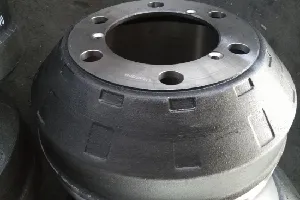
-
 Afrikaans
Afrikaans -
 Albanian
Albanian -
 Amharic
Amharic -
 Arabic
Arabic -
 Armenian
Armenian -
 Azerbaijani
Azerbaijani -
 Basque
Basque -
 Belarusian
Belarusian -
 Bengali
Bengali -
 Bosnian
Bosnian -
 Bulgarian
Bulgarian -
 Catalan
Catalan -
 Cebuano
Cebuano -
 Corsican
Corsican -
 Croatian
Croatian -
 Czech
Czech -
 Danish
Danish -
 Dutch
Dutch -
 English
English -
 Esperanto
Esperanto -
 Estonian
Estonian -
 Finnish
Finnish -
 French
French -
 Frisian
Frisian -
 Galician
Galician -
 Georgian
Georgian -
 German
German -
 Greek
Greek -
 Gujarati
Gujarati -
 Haitian Creole
Haitian Creole -
 hausa
hausa -
 hawaiian
hawaiian -
 Hebrew
Hebrew -
 Hindi
Hindi -
 Miao
Miao -
 Hungarian
Hungarian -
 Icelandic
Icelandic -
 igbo
igbo -
 Indonesian
Indonesian -
 irish
irish -
 Italian
Italian -
 Japanese
Japanese -
 Javanese
Javanese -
 Kannada
Kannada -
 kazakh
kazakh -
 Khmer
Khmer -
 Rwandese
Rwandese -
 Korean
Korean -
 Kurdish
Kurdish -
 Kyrgyz
Kyrgyz -
 Lao
Lao -
 Latin
Latin -
 Latvian
Latvian -
 Lithuanian
Lithuanian -
 Luxembourgish
Luxembourgish -
 Macedonian
Macedonian -
 Malgashi
Malgashi -
 Malay
Malay -
 Malayalam
Malayalam -
 Maltese
Maltese -
 Maori
Maori -
 Marathi
Marathi -
 Mongolian
Mongolian -
 Myanmar
Myanmar -
 Nepali
Nepali -
 Norwegian
Norwegian -
 Norwegian
Norwegian -
 Occitan
Occitan -
 Pashto
Pashto -
 Persian
Persian -
 Polish
Polish -
 Portuguese
Portuguese -
 Punjabi
Punjabi -
 Romanian
Romanian -
 Russian
Russian -
 Samoan
Samoan -
 Scottish Gaelic
Scottish Gaelic -
 Serbian
Serbian -
 Sesotho
Sesotho -
 Shona
Shona -
 Sindhi
Sindhi -
 Sinhala
Sinhala -
 Slovak
Slovak -
 Slovenian
Slovenian -
 Somali
Somali -
 Spanish
Spanish -
 Sundanese
Sundanese -
 Swahili
Swahili -
 Swedish
Swedish -
 Tagalog
Tagalog -
 Tajik
Tajik -
 Tamil
Tamil -
 Tatar
Tatar -
 Telugu
Telugu -
 Thai
Thai -
 Turkish
Turkish -
 Turkmen
Turkmen -
 Ukrainian
Ukrainian -
 Urdu
Urdu -
 Uighur
Uighur -
 Uzbek
Uzbek -
 Vietnamese
Vietnamese -
 Welsh
Welsh -
 Bantu
Bantu -
 Yiddish
Yiddish -
 Yoruba
Yoruba -
 Zulu
Zulu
rear drum brake spring kit
Understanding the Rear Drum Brake Spring Kit Its Importance and Maintenance
When it comes to vehicle safety, the braking system is undoubtedly one of the most critical components. Among the various braking systems, the rear drum brake setup is still widely used in many vehicles, especially in older models and certain trucks. A vital component of this system is the rear drum brake spring kit. Understanding its function and maintenance can help enhance your vehicle's performance and safety on the road.
What Is a Rear Drum Brake Spring Kit?
The rear drum brake spring kit consists of various springs and related components essential for the proper operation of drum brakes. These brakes work by pushing brake shoes against a rotating drum, which slows down or stops the vehicle. The spring kit helps to return the brake shoes to their original position after the brakes have been applied, maintaining proper clearance between the drum and the shoes. This kit typically includes return springs, hold-down springs, and various clips necessary for secure installation.
Importance of the Spring Kit
1. Safety The primary function of the rear drum brake spring kit is to ensure the braking mechanism operates correctly. Worn or malfunctioning springs can lead to decreased braking efficiency, which poses a serious safety risk. Regular inspections and replacements of worn components are essential to ensure the springs perform effectively.
2. Performance Proper spring tension allows for better response time when the brakes are applied. If the springs are too weak or broken, the brake shoes may not engage correctly, leading to longer stopping distances and increased wear on the braking components.
3. Durability The rear drum brake spring kit is designed to withstand the high-stress conditions associated with braking. However, over time, these springs can wear out due to the constant stress and heat generated during braking. Maintaining these components in good condition can lead to longer-lasting brakes and less frequent visits to the mechanic.
rear drum brake spring kit

Maintenance Tips
1. Visual Inspections Regularly inspect your brake system for any visible signs of wear or damage. Look for broken or stretched springs, rust, or other forms of deterioration. If anything seems amiss, it’s best to consult with a professional mechanic.
2. Routine Replacements Brake components, including the spring kit, should be replaced at regular intervals. Depending on the vehicle and driving conditions, this can be anywhere from 30,000 to 70,000 miles. Refer to your vehicle’s owner manual for specific recommendations.
3. Use Quality Parts When replacing your rear drum brake spring kit, it's crucial to use high-quality components. Cheaper or substandard springs may not provide the same level of performance or safety and could fail prematurely.
4. Professional Installation If you are not comfortable working on your vehicle's braking system, it’s advisable to seek professional help. Incorrect installation can lead to severe safety issues, and a qualified mechanic can ensure that everything is installed correctly and efficiently.
Conclusion
In conclusion, the rear drum brake spring kit plays a vital role in the overall functionality and safety of a vehicle's braking system. Regular maintenance and timely replacements of these springs are necessary to ensure optimal performance. By understanding the importance of these components and taking the appropriate steps for care and maintenance, vehicle owners can enhance their safety on the road while ensuring their braking systems are reliable. Remember, your brakes are not just another part of your car—they are essential to your safety and the safety of others on the road.
-
Rear Drum Brakes Maintenance TipsNewsAug.04,2025
-
Key Components Affecting Brake Drum FunctionNewsAug.04,2025
-
Important Inspection for Truck Drum BrakeNewsAug.04,2025
-
How to Prepare for Changing Rear Drum BrakesNewsAug.04,2025
-
Essential Tools for Cleaning Drum Brakes ProperlyNewsAug.04,2025
-
Brake Drum Function GuideNewsAug.04,2025
-
Safety Features of Red Brake DrumsNewsAug.01,2025
